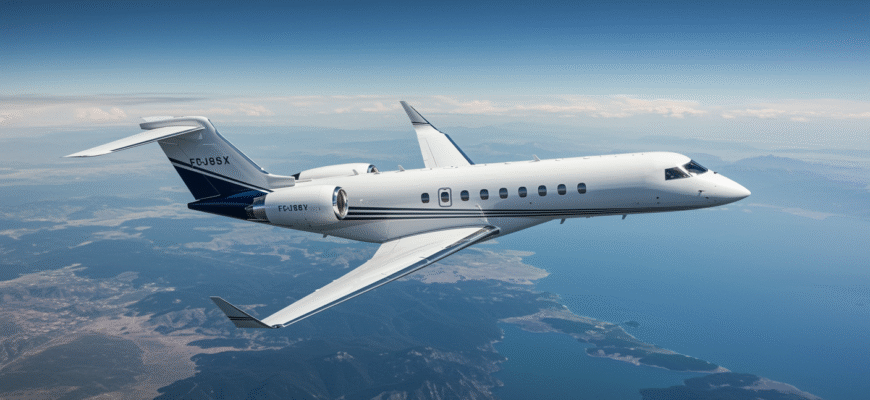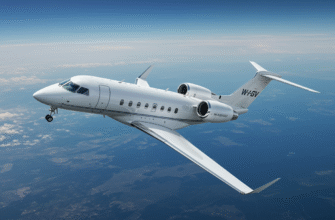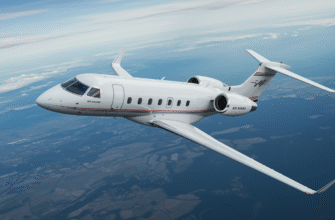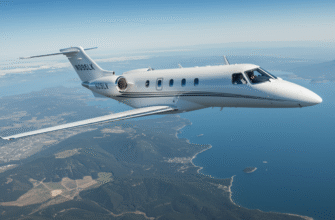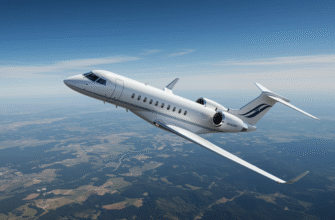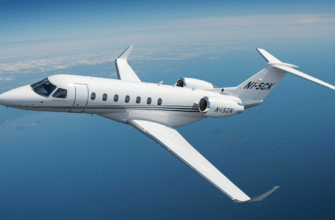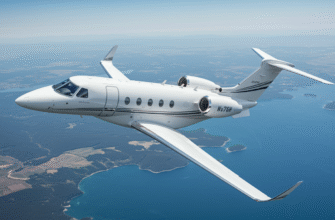There’s a reason jet enthusiasts can spot it from nearly half a runway away—it’s got presence. When Bombardier launched the Global Express in the mid-1990s, the goal wasn’t subtle: create a business jet that could eat continents for breakfast. Designed to blister through nearly 6,226 nautical miles without a stop, this jet wasn’t born to fit in. It was engineered to set a completely new bar for long-range private jets—one that still holds weight decades later.
From its first flight in 1996, the Global Express didn’t just flex range—it packed in a serious passenger experience. Wide body. Whisper-quiet cabin. Altitude comfort that doesn’t leave you bone-dry or jetlag-ruined. That kept it on radar for everyone from private equity titans to heads of state. And over time? The signature silhouette became a regular on tarmacs in Dubai, Geneva, and wherever else power congregates at FL510.
What makes it elite goes beyond numbers—it’s the blend of performance muscle, plush interior habits, and brutal reliability. That’s why it’s flown by everyone from Russian billionaires to special forces command units. They’re not picking it for ego. They’re picking it because this machine shows up, every time.
Why The Bombardier Global Express Captures Big Flyers
It wasn’t built to be second best. Bombardier’s mission with the Global Express was to push private aviation into truly international territory. No refuel pit-stops required. LA to Tel Aviv? Done. Tokyo to NYC? Easy. The Global Express was the first to really give that kind of reach with the comfort of a flying penthouse—making it not just a jet, but a milestone.
Pilots loved flying it. Owners loved the attention. Engineers either feared it or secretly admired it. Designed with key elements borrowed from Bombardier’s Challenger family but radically reworked, it launched with a swept-wing design, a powerful T-tail, and custom Rolls-Royce engines that laughed at jet stream resistance.
That made it more than just a status symbol. Governments picked it for diplomatic missions; private charter firms clung to it for premium clientele; and ultra-high-net-worth individuals—think private tech founders or discreet oligarchs—chose it as a flying fortress with comfort tweaked down to lighting warmth and carpet texture.
It’s Not Just Range, It’s Reach
Having 6,226 nautical miles of range isn’t just a flex—it’s freedom. With that distance, you’re talking nonstop routes that save serious time and planning headache. Cross continents, oceans, and borders without touching ground. Imagine being able to jump from Los Angeles to Tel Aviv or Tokyo to New York without pulling over. It’s that kind of stamina that turned heads early—and keeps the Global Express on top-tier shopping lists today.
But it’s not just about how far it flies. It’s how smart. Fuel efficiency was baked into its DNA. The BR710 engines from Rolls-Royce are clean burners relative to their output, and the aircraft’s climb rate—especially up to FL510—is a pilot favorite: straight to cruise height, less time dragging in low-altitudes.
Then there’s the wing. It uses a supercritical airfoil design and blended winglets that do more than just look sleek. They reduce drag and let the jet handle turbulence like a seasoned stage performer keeping rhythm at all altitudes. For passengers, that means fewer jolts and a much smoother ride, even on bouncy transatlantic days.
And when it stacks against the Gulfstream G650 or Dassault Falcon 8X? Numbers might show a close race—range, speed, cabin pressure—but the flying experience feels different. Pilots say the G650 is a little stiffer, while the Falcon 8X caters more to fuel economy. The Global Express splits that middle perfectly: luxe meets long haul without compromise.
Inside Feels Designed By Someone Who’s Actually Flown 14 Hours
Being productive—or even halfway conscious—after 14 straight hours in the air isn’t about willpower. It’s about setup. That’s where the cabin of the Global Express plays its strongest card. From pressurization to layout, everything was designed with real travelers in mind.
- Cabin pressure equivalent to 4,500–5,000 ft, even when cruising at 45,000–51,000 ft
- Ultra-quiet cabin that keeps engine hum and external wind down to a whisper
- Zonal climate and smart humidity control to keep skin (and sinuses) from turning into desert terrain
The lighting system wasn’t just aimed at style—it syncs with circadian rhythms so you don’t land feeling like an alien in your own body. Seats aren’t just plush—they’re positioned for privacy, productivity, or full-on flat-bed mode. Layouts often shift between forward club seating, central meeting areas, and rear lounges with divans and entertainment kits.
Soundproofing doesn’t just protect ears—it creates a cocoon. Apply that to modern inflight connectivity and you’ve got a space that can easily double as a boardroom, meditation zone, or both. Need options? Many buyers swapped seats for staterooms, had a gourmet galley installed, or even ordered medevac-ready conversions for high-level security ops.
| Cabin Feature | Specification |
|---|---|
| Cabin Length | 48 ft 4 in |
| Cabin Volume | 2,140 cu ft |
| Max Passengers | 19 |
| Baggage Access | Inflight Available |
This isn’t an airplane decked out in first-class perks. It’s better. It’s engineered living space in the sky—for people who live in multiple countries, back-to-back meetings, or rare moments of escape that don’t compromise for altitude.
Engineering & Materials: What’s Under the Skin of This Beast
What makes the Global Express still feel like a powerhouse decades after its debut? That question keeps circling every hangar, pilot chat forum, and jet broker newsletter. Spoiler: it’s not just the range—it’s what it’s made of and how it was built.
The Global Express airframe is a clever blend of aluminum-lithium alloy and carbon composite panels. Aluminum-lithium alloys don’t just save weight—they also push back against fatigue and cracking over time, which means fewer maintenance calls and more peace of mind on insane-haul flights. Throw in key composite components around control surfaces and non-load-bearing areas, and you’ve got a structure that doesn’t just survive pressure—it flexes with purpose.
The plane’s signature T-tail setup isn’t just for looks. It’s a stability enhancer, especially at high-altitude cruise. That vertical posture helps with pitch control through rough air and cleanly separates the elevators from engine wash. The wings? Swept back 35 degrees and finished with classic winglets, they carry triple duties: chasing speed, shrugging off drag, and softening the ride in thin, messy skies.
On the ground, this beast doesn’t stagger. Its tricycle gear and power nosewheel steering make tight turns at crowded FBOs look almost staged. Hydraulics feed smooth brake response and silky articulation over uneven ramps—despite that nearly 100,000-pound max takeoff weight. And pilots can’t stop praising the feedback of the control surfaces—they’re big, direct, and balanced.
Ask any veteran mechanic what this bird looks like under the cowling and you’ll hear it fast: “It screams Global.” From the fuselage taper to the boarding airstair that looks ripped from a luxury liner, the markers are distinct. Systems are labeled the Bombardier way, panels open with a particular double-latch click, and that large aft fuselage fairing makes space for modular install—the kind of stuff VIP mod shops fight over. Everyone who’s worked on or flown one just knows—it’s a Global, always.
Operational Reality: Ownership, Costs, and Upkeep
Buying a Global Express isn’t just buying a jet—it’s buying into a tier. Pre-owned units can trend between $8–$15 million depending on hours, avionics, and bling. A new one? Double or triple that, if you can even spec one today—it’s legacy hardware, usually reserved or snapped up for military or VIP conversions.
Maintenance? It’s a relationship. A-checks are light and frequent. B and C checks dig deeper but come with predictable intervals—every savvy operator has a spreadsheet tracking every calendar day and flight hour. Owners get borderline obsessive over cabin climate quirks, autopilot logic, or slight idiosyncrasies in the bleed air system—and that’s saying something.
As for crew, you’ll want two in front, minimum, but many companies assign a third for long-hauls. Flight attendants on longer jumps are the norm—if you’ve got lie-flat beds and gourmet meals at 45,000 feet, you’d better have someone there besides the pilot heating them. Spend time talking to Global-rated pilots and the passion’s real. The interface, the performance in weather, the way the wing soaks up chop at cruise—they trust it. Some have jumped off newer platforms just to come back to this beast.
Jet Culture: The Global Cult and Why It Lasts
The Global Express has its loyalists—and it’s not just corporate CEOs. Government fleets, special missions units, intelligence agencies, and ultra-wealthy clients keep this model in circulation. Some have flown for kings. Others became ghost birds on military airfields.
Its profile is iconic, especially in matte black, all-white, or custom metallic paints. Jetspotters and tail trackers light up when one shows up with encrypted ACARS or onboard EW suites. The Global isn’t just a resale darling—it’s a unicorn. Clean ownership logs, updated cockpits, and flush interiors make these jets move fast on the secondary market.
The Global Express didn’t just open the doors to ultra-long-range travel, it helped redefine it. Before Gulfstream hit 7,000 miles, there was Bombardier quietly moving decision-makers across oceans. This bird carved out the long-haul luxury scene and then stayed to defend the throne.
